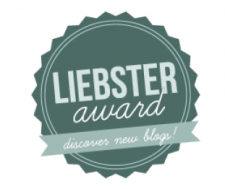So, I talked about how I will be embarking on an elimination diet in the hopes of curing my eczema. For others out there like me, that sounds like a very exciting prospect. But what exactly is an elimination diet, and why does it work?
The basis for an elimination diet is eliminating all food that could possibly trigger your condition. This condition could be any number of things, such any digestive issues, rheumatoid arthritis, eczema, other autoimmune problems, etc. Every list you see will be different, but these are the main ones. The big trigger foods are eczema are gluten, dairy, and eggs, but the elimination diet I will be following includes a much larger list than that to make sure that nothing is missed. The Whole Life Nutrition page has 4 downloadable lists of what you can or cannot eat in various phases. Their blog post about the diet also has a fairly good list and overview. One thing to note is that this is a vegetarian diet until the 3rd phase since while meat is not a trigger food on its own, most meat we consume (commercial meat in particular) contains things that we don’t want in our bodies when we’re detoxing. When meat is added back in, it should be organic, free range, grass fed, etc.
When eliminating these foods from our diet, our body is allowed to heal from any potential damage they have caused. Many people feel off or sick at the beginning as their body heals and adjusts to the new diet (Jennifer over at 20 Something Allergies talks about why – perfect timing!), but by the end most people feel amazing, healthy, and full of energy (as I said before, even if you have no food sensitivities, a month of nothing but clean eating never hurt anyone). After this detox and healing, you can slowly start adding off-limits foods back in. One at a time, starting with foods that are typically less likely to cause problems. You gauge how you feel over a few days, and if you have any reactions. If you do, you stop eating that food. If you don’t, you can keep it in your diet as you move on to the next food.
This diet is broken up into 6 stages (although they are labeled as 3 phases plus the Challenge Phase). The first phase is the detox/fasting phase. Two days of drinking smoothies to jump start your body and get it ready for the upcoming month. If you have any concerns about this stage, you can skip it (and children shouldn’t do this stage), but I have heard it is very helpful for those who do it. The next stage is Phase 1. This week long (or longer if needed) phase is the most restrictive, but there are still plenty of options out there. You just need to get creative! This phase should include a lot of organic vegetables and smoothies.
The next 3 stages are where you begin challenging foods. Phases 2 and 3 break down the order in which you should do this. If you do not extend any of the phases (which of course you should do if you feel the need), the end of Phase 3 will be your 28 days. From here, if you wish, you enter the Challenge Phases. It starts by adding in certain foods that you haven’t been eating, but are not part of the main triggers. From here, if you wish, is part 2 of the Challenge Phase. This phase is optional if you are feeling good enough that you don’t feel the need to add those foods back into your diet. It is also to be taken more slowly than the previous stages to truly gauge your reactions to these foods (which include gluten, dairy, eggs, yeast, corn, and a few others).
Something to keep in mind is that just following this diet isn’t enough. You life needs to be as clean as possible, although the real foods you’re eating will make a difference if you haven’t been good about that in the past. If possible, I highly recommend switching to chemical-free hygiene and cleaning products, drinking filtered water, and buying organic foods when possibly (if nothing else, get the Dirty Dozen organic).
It’s a lot to take in, but it’s totally going to be worth it.




Pingback: “Nomato” Sauce | Healthy People, Healthy Planet